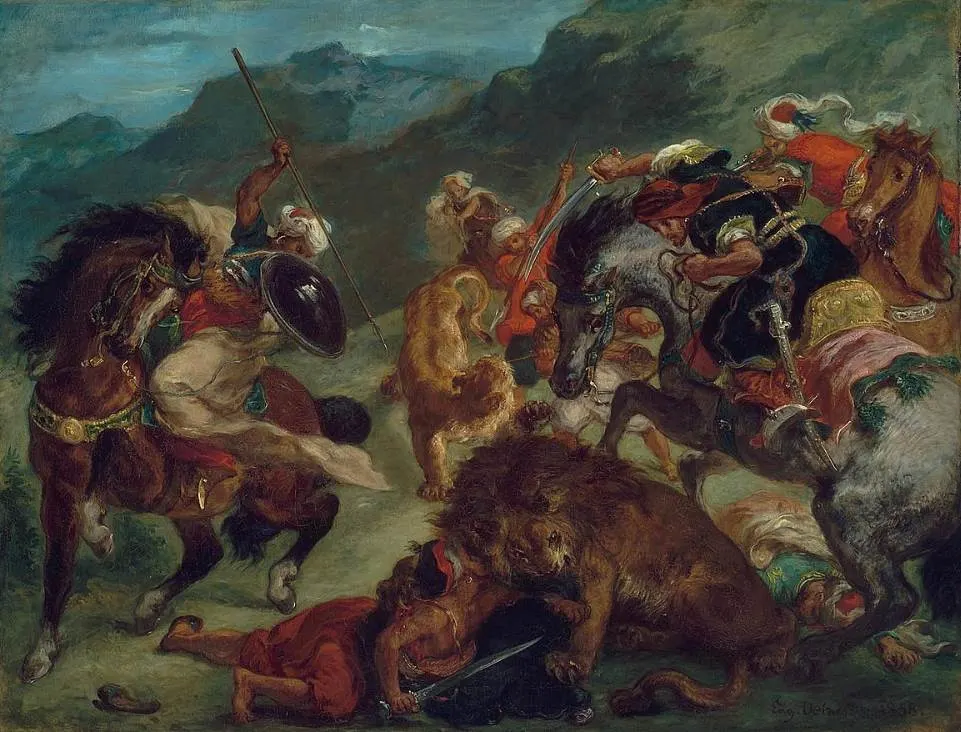One of the most important events during the career of Eugène Delacroix (1798-1863) was an extended trip to Morocco in the early 1830s.
The French artist already painted his iconic “Liberty Leading the People” in 1830 and needed some new inspiration following the French Revolution that year.
Just like most Romantic artists of his time, he became obsessed with exotic subjects and this is reflected in the paintings he produced later on in his career.
Let’s take a closer look at some of the most interesting facts about The Lion Hunt by Eugène Delacroix, a series of paintings that reflect his newly found interest.
1. The series was completed between the late 1840s and early 1860s
Eugène Delacroix successfully took over the role as the leading artist of the French Romantic school when his colleague and main source of inspiration Théodore Géricault (1791-1824) passed away in the early 1820s.
His vivid paintings full of warm colors and dramatic effects were in sheer contrast to the ideals of Neoclassical artists who aimed to achieve perfection.
One of the most remarkable facts about the Lion Hunt Series by Delacroix is that he only started working on it in the late 1840s. He completed the final work in the early 1860s, over a decade later.
By this time he was already an accomplished and mature master, a process that started over 2 decades before in the early 1820s.
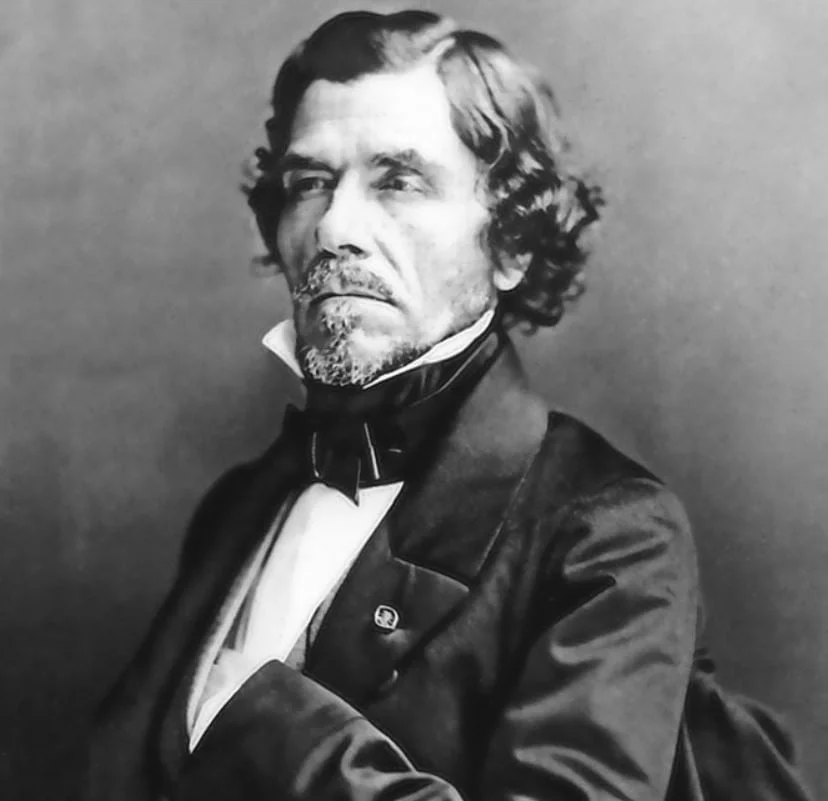
2. There are several Lion Hunt scenes and sketches in the series
Delacroix became increasingly obsessed with Exoticism following his trip to North Africa in the early 1830s.

He managed to travel along with a French diplomat named Charles-Edgar de Mornay (1803-1878) who was sent on a diplomatic mission to Morocco and who became the first French ambassador to Morocco.
The artist wasn’t interested in the diplomatic aspect of the trip and solely went along to discover a new culture that he considered to be more primitive than his.
He eventually painted 7 paintings that depict a Lion Hunt Scene of which several are preparatory drawings and sketches.
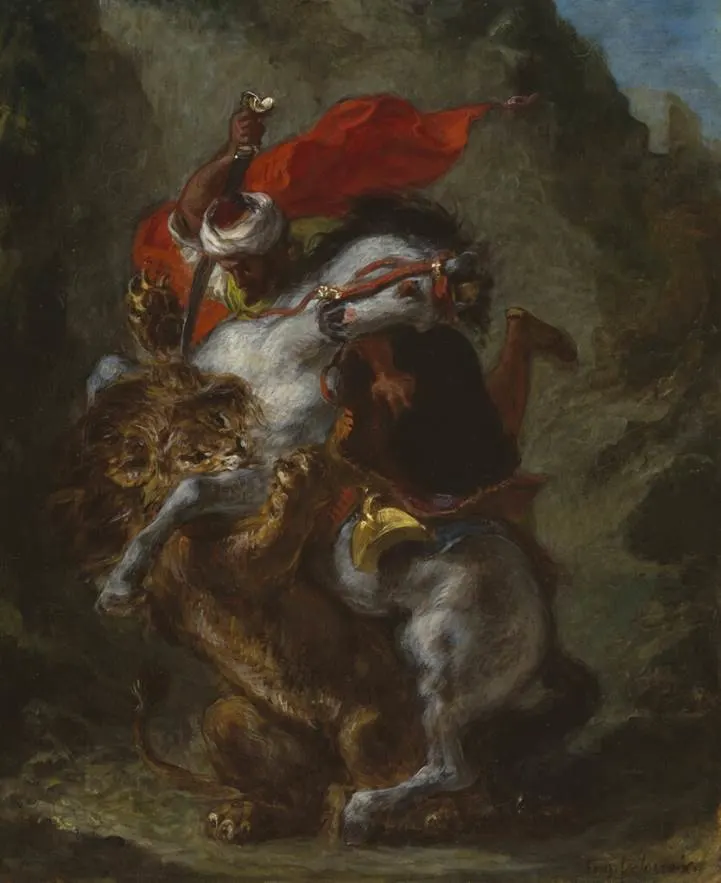
3. The main version in the series was seriously damaged by fire in the year 1870
The main version of the painting is located at the Musée des Beaux-Arts de Bordeaux but was severely damaged by a fire in 1870.
The top half of the painting was completely unrecognizable, so we can only base the full version on the two sketches he made before completing the monumental work of art.

4. Delacroix probably never saw a lion in the wild during his trip to North Africa
The inspiration that the exotic local culture gave Delacroix eventually resulted in over 100 oil paintings and drawings.
Many of these depict local people wearing the colorful clothes that were fashionable in North Africa at the time.
He also managed to paint women, something remarkable because of the strict Muslim rules at the time. One of his most famous paintings of this period is titled “Women of Algiers” which depicts Algerian women sitting in their apartment.
What’s striking about the Lion Hunt scenes that Delacroix painted is that he most probably never saw lions in the wild, even though the Barbary Lion still roamed around in this region (it only got extinct in the 1960s).
He modeled the lions in these paintings by making sketches of lions in zoos instead of depicting animals that he encountered in the wild.
This was probably not a bad idea as well considering the ferocious nature of these large cats.

5. He was probably inspired by similar paintings of a 17th-century Flemish master
It’s no secret that Egène Delacroix was a great admirer of the paintings of Peter Paul Rubens (1577-1640), the Flemish master and one of the most prominent artists of the Baroque era.
The French artist integrated similar dramatic effects found in the Baroque paintings of Rubens into his works.
This is very much reflected in the Lion Hunt series as these resemble one of the paintings by Rubens with a similar subject and with the same name.
The Lion Hunt by Rubens was completed in 1621 and is one of a series of paintings in which hunting was the main subject. Other animals in this series include a hippopotamus, crocodile, tiger, wild boar, fox, and wolf.
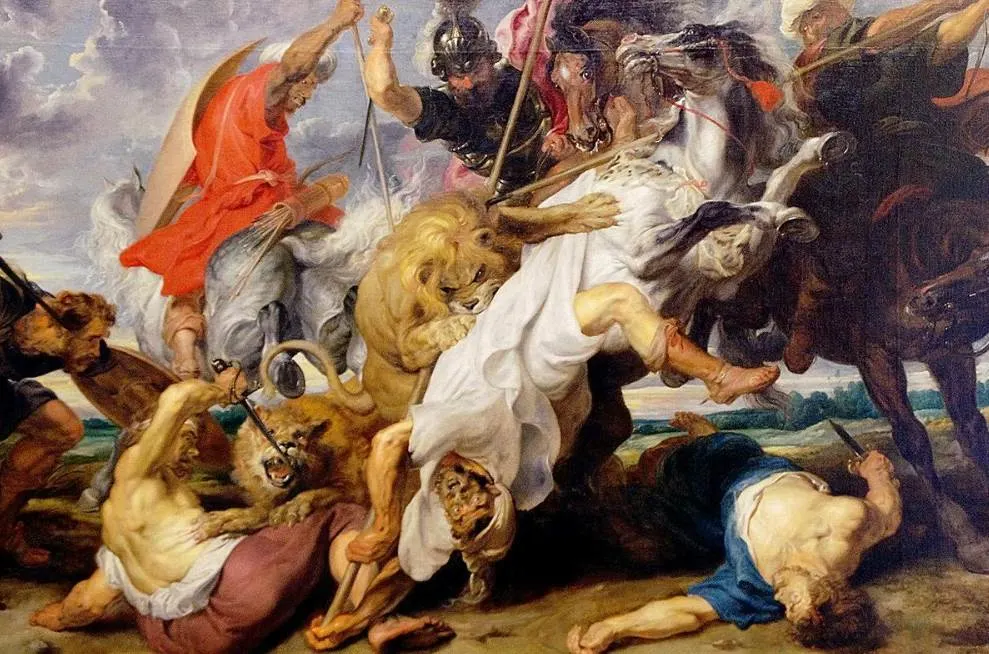
6. The color scheme of the paintings is in line with the Romantic ideals
Delacroix focused on contrasting colors to enhance the dramatic effect of his paintings. He intertwined red and green, blue and orange, and other complementary colors with wild brushstrokes.
This is very much reflected in the Baroque paintings of Rubens and the Romantic paintings of Delacroix.
This effect is only strengthened by the dramatic subject matter of the paintings in this series which features ferocious predators clinching with warriors on horses.

7. How big is The Lion Hunt by Eugène Delacroix?
The 7 paintings and drawings in its series all vary in size and composition from each other. Here is an overview of the different paintings in this series and their dimensions:
- Arab Horseman Attacked by a Lion (1849/1850) – 44 × 38 centimeters (17.32 x 14.96 inches)
- Lion Hunt in Morocco (1854) – 74 × 92 centimeters (29.13 x 36.22 inches)
- The Lion Hunt (1854) – 86 × 115 centimeters (33.85 x 45.27 inches)
- The Lion Hunt (1855) – 57 x 74 centimeters (22.44 x 29.13 inches)
- The Lion Hunt (1855) – 181 × 247 centimeters (71.25 x 97.24 inches)
- The Lion Hunt (1858) – 92 x 117.5 centimeters (36.22 x 46.25 inches)
- Lion Hunt (1860/1861) – 76.5 × 98.5 centimeters (30.11 x 38..77 inches)
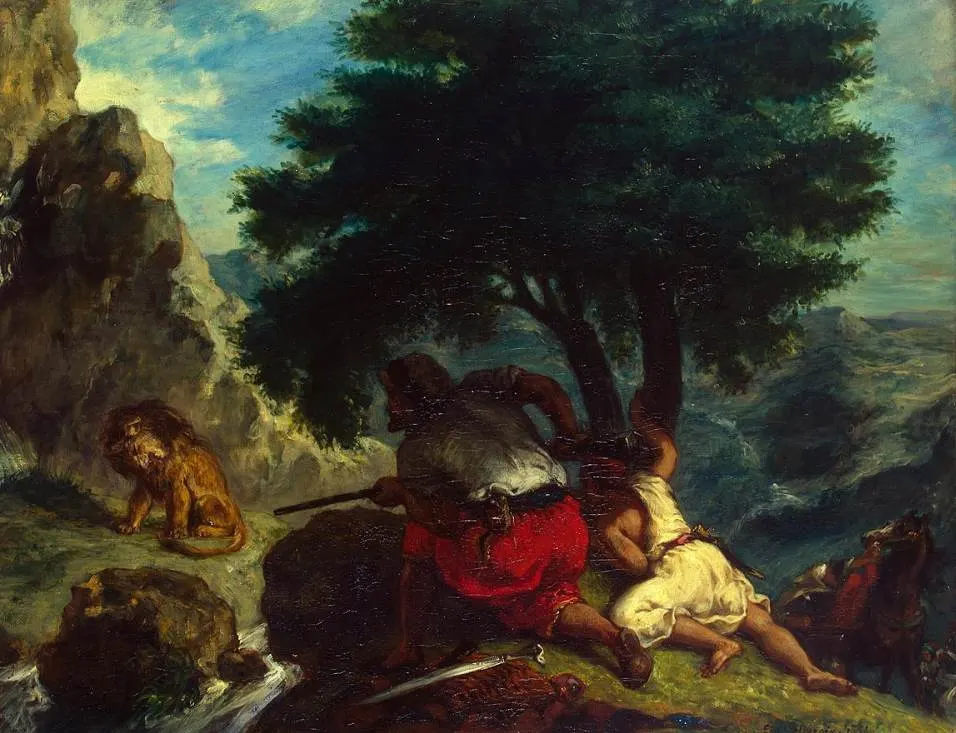
8. Where are the paintings located today?
Below is an overview of where the 7 paintings and drawings of this Lion Hunt Series by Delacroix can be found. As you’ll see, these artworks have been distributed to museums all across the planet.
- Arab Horseman Attacked by a Lion – Art Institute of Chicago
- Lion Hunt in Morocco – Hermitage Museum/Saint Petersburg
- The Lion Hunt – Musée d’Orsay/Paris
- The Lion Hunt – Nationalmuseum/Stockholm
- The Lion Hunt – Musée des Beaux-Arts/Bordeaux
- The Lion Hunt – Museum of Fine Arts/Boston
- Lion Hunt – Art Institute of Chicago
